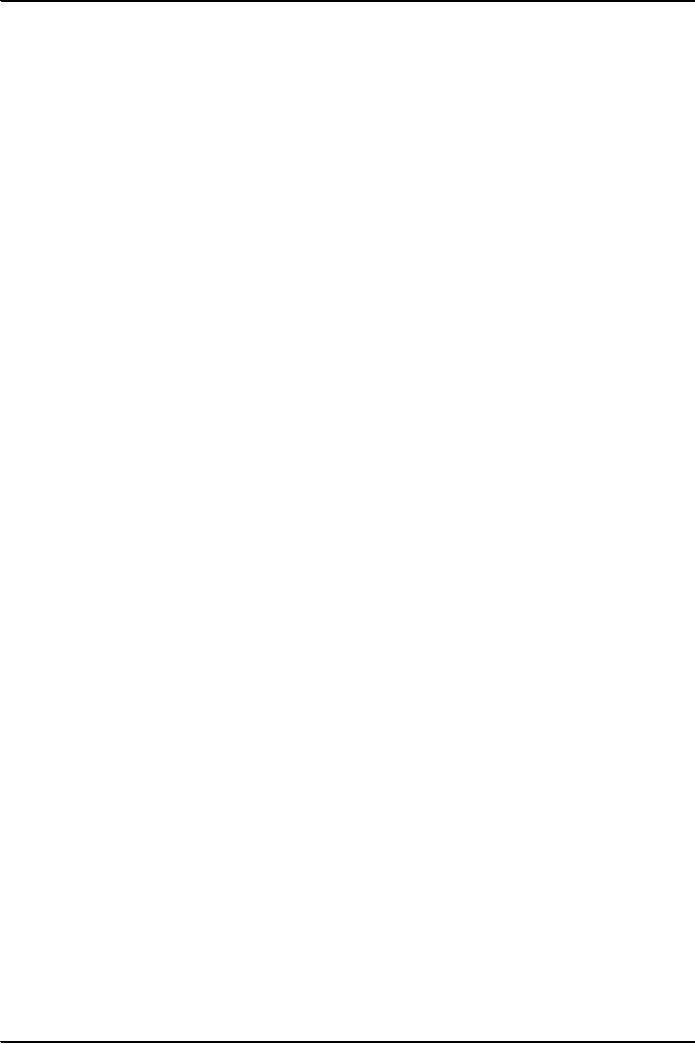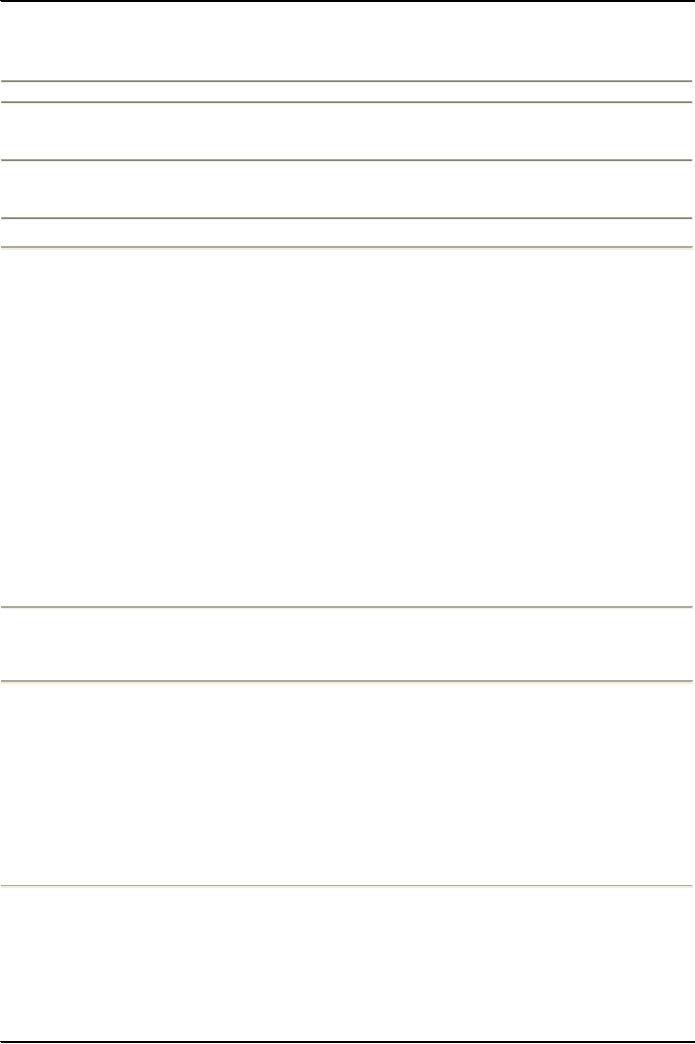 |
THEORIES OF SOCIAL CLASS AND STRATIFICATION – II |
| << THEORIES OF CLASS AND STRATIFICATION – I:Critical evaluation |
| THEORIES OF CLASS AND SOCIAL STRATIFICATION – III >> |

Introduction
to Sociology SOC101
VU
Lesson
23
THEORIES
OF SOCIAL CLASS AND STRATIFICATION
II
Max
Weber (1864-1920)
built his approach to
stratification on the analysis developed by
Marx, but he
modified
and elaborated it. Like
Marx, Weber regarded society
as characterized by conflicts over power
and
resources.
Yet where Marx saw polarized
class relations and economic
issues at the heart of all
conflict,
Weber
developed a more complex, multidimensional
view of society.
Social
stratification is not simply a matter of
class, according to Weber,
but is also shaped by two
other
aspects:
status
and
power.
These
three overlapping elements of
stratification produce an enormous
number
of
possible positions (inequality) within
society, rather than the rigid
bipolar model, which Marx
proposed.
According
to Weber class divisions derive not
only from control or lack of
control of the means of
production,
but from economic
differences, which have
nothing directly to do with property.
Such
resources
include especially the skills and
credentials, or qualifications, which affect the
types of job people,
are
able to obtain.
Weber
believed that an individual's market
position strongly
influences his or her `life
chances'. The market
positions
(capacities) people have in terms of the
skills they bring to the labor
market as employees,
explains
the
rewards they will receive.
Where people have good
market capacity they will
have very good life
chances:
these
chances include income, perks,
and pensions together with
less tangible benefits such as security
of
job,
pleasant working environment
and considerable autonomy at
work.
Those
in managerial or professional occupations
earn more, and have
more favorable conditions of
work,
for
example, than people in blue-collar jobs.
The qualifications they possess, such as
degrees, diplomas and
the
skills they have acquired,
make them more `marketable'
than others without such
qualifications.
Managers
of corporations control
the
means of production although they do
not own
them.
If managers can
control
property for their own
benefit awarding themselves
huge bonuses and magnificent
perks it
makes
no practical difference that they do not
own the property that they so
generously use for their
own
benefit.
Status
in
Weber's theory refers to
differences between social
groups in the social honor or
prestige they are
accorded
by others. Presently status is being
expressed through people's
styles
of life. Markers
and symbols
of
status--such as housing, dress, manner of
speech, occupation all help to
shape an individual's
social
standing
in the eyes of others. People
sharing the same status form
a community in which there is a
sense
of
shared identity.
While
Marx believed that status distinctions
are the result of class divisions in
society, Weber argued
that
status
often varies independently of class
divisions. Possession of wealth normally
tends to confer high
status,
but there are many
exceptions. Olympic gold
medalists, for example, may
not own property, yet
they
may
have very high prestige.
Property and prestige is not
one way street: although
property can bring
prestige,
prestige can also bring
property.
Power,
the
third element of social
class, is the ability to control
others, even against their
wishes. Weber
agreed
with Marx that property is a
major source of power, but he
added that it is not the
only source.
With
time, industrial societies witness the
growth of the bureaucratic state. This
expansion of government
and
other types of formal
organizations means that power
gains importance in the stratification
system.
Party
formation is an important aspect of
power, and can influence
stratification independently of class
and
status.
Party defines a group of
individuals who work together
because they have common
backgrounds,
aims
or interests. Party can be influenced by
class but can also influence
the economic circumstance of party
members
and thereby their class.
Party membership cuts across
class differences. There are
parties based
on
religious affiliations and nationalist
ideals and may include the
`haves' and `have-nots'. There could
also
58

Introduction
to Sociology SOC101
VU
be
groups possessing effective political
power without economic leverage
(military, trade union).
Therefore
inequality
could there due to political
power.
In
Weberian perspective society
can be divided in 2+ classes as
below:
Upper
class
UPPER
CLASS
Upper
middle class
Middle-middle
class
MIDDLE
CLASS
Lower
middle class
Skilled
manual workers
Semi-skilled
workers.
WORKING
CLASS
Unskilled
manual workers.
The
poor
THE
POOR
Weber's
theory comes closer to
explaining the dynamics of stratification
in modern societies.
Weber
anticipated the proliferation of classes,
with a new class of white-collar
employees, administrators,
technicians
and civil servants, who
are growing in number and
importance.
Property
relations are important (Marx)
but the market position and
marketability is decisive in
determining
an
individual's class
position.
Weber
rejected Marx's view that
the workers (or employees)
have nothing but their
labor to sell to the
highest
bidder. The reality is that:
·
Workers
possess skills.
·
The
distribution of skills can be
controlled (keep it
scarce).
·
Increase
skill marketability.
Comparative
picture of the conflict approach by Marx
and Weber
Marx
Weber
Relationship
to means of
Focused
more on the market
production
is all important.
position
of those in employment.
Increasing
polarity
Growth
of white-collar class that
between
classes and
would
mitigate against the
revolution.
collapse
of capitalism.
Class
all embracing
Separate
political status
factors
fact
of life.
to
come into play.
59
Table of Contents:
- THE ORIGINS OF SOCIOLOGY:Auguste Comte, The Fields of Sociology
- THE SOCIOLOGICAL PERSPECTIVE:Society affects what we do
- THEORETICAL PARADIGMS:Salient Paradigms, Critical Evaluation
- SOCIOLOGY AS SCIENCE:Empirical, Verifiable, Cumulative, Self-Correcting
- STEPS IN SOCIOLOGICAL INVESTIGATION:Exploration/Consultation
- SOCIAL INTERACTION:Social Status, ROLE, The Social Construction of Reality
- SOCIAL GROUPS:Primary and Secondary Groups, Reference Group, Networks
- ORGANIZATIONS:Utilitarian Organizations, Coercive Organizations
- CULTURE:Universality, Components of Culture, Symbols, Language
- CULTURE (continued):Beliefs, Norms, Cultural Diversity
- CULTURE (continued):Culture by social class, Multiculturalism, Cultural Lag
- SOCIALIZATION: HUMAN DEVELOPMENT, NATURE, Social Isolation
- UNDERSTANDING THE SOCIALIZATION PROCESS
- AGENTS OF SOCIALIZATION:The Family, The School, Peer Groups, The Mass Media
- SOCIALIZATION AND THE LIFE COURSE:CHILDHOOD, ADOLESCENCE
- SOCIAL CONTROL AND DEVIANCE:Crime, Deviants, Stigma, Labeling
- THE SOCIAL FOUNDATIONS OF DEVIANCE:Cultural relativity of deviance
- EXPLANATIONS OF CRIME:Sociological explanations
- EXPLANATIONS OF CRIME -- CONTINUED:White-Collar Crime, Conflict Theory
- SOCIAL DISTRIBUTION OF CRIME: EXPLANATIONS, Gender and Crime
- SOCIAL STRATIFICATION: INTRODUCTION AND SIGNIFICANCE
- THEORIES OF CLASS AND STRATIFICATION – I:Critical evaluation
- THEORIES OF SOCIAL CLASS AND STRATIFICATION – II
- THEORIES OF CLASS AND SOCIAL STRATIFICATION – III
- SOCIAL CLASS AS SUBCULTURE
- SOCIAL MOBILITY:Structural factors, Individual factors, Costs
- THE FAMILY: GLOBAL VARIETY, Marriage Patterns, Patterns of Descent
- FUNCTIONS OF FAMILY:Reproduction, Social placement
- FAMILY AND MARRIAGE IN TRANSITION:Family is losing functions
- GENDER: A SOCIAL CONSTRUCTION, Gender socialization
- GENDER SOCIALIZATION:Role of family, Gender Stratification
- EXPLANATIONS OF GENDER INEQUALITY:Conflict Explanations, Feminism
- FUNCTIONS OF SCHOOLING:Cultural Innovation, School Tracking
- ISSUES IN EDUCATION:Low Enrollment, High Dropout, Gender Disparity
- POPULATION STUDY AND ITS SIGNIFICANCE:Crude Birth Rate
- THEORY OF POPULATION GROWTH:Theory of Demographic Transition
- POPULATION PROFILE OF PAKISTAN:World Population Growth
- POPULATION PROFILE OF PAKISTAN (Continued):Age Distribution, Sex Composition
- IMPLICAIONS OF POPULATION GOWTH:Additional GDP needed per year
- POPULATION POLICY:Goals of Population Policy, Objectives, Strategies
- ENVIRONMENT AND SOCIETY:Global Dimension, Historical Dimension
- ENVIRONMENTAL ISSUES:Preserving Clean Water, Clearing the Air
- SOCIAL CHANGE:Social change is controversial.
- CAUSES OF SOCIAL CHANGE:Culture and Change, Conflict and Change, Modernization
- MODERNITY AND POST MODERNITY:Cultural Patterns, Post-modernity